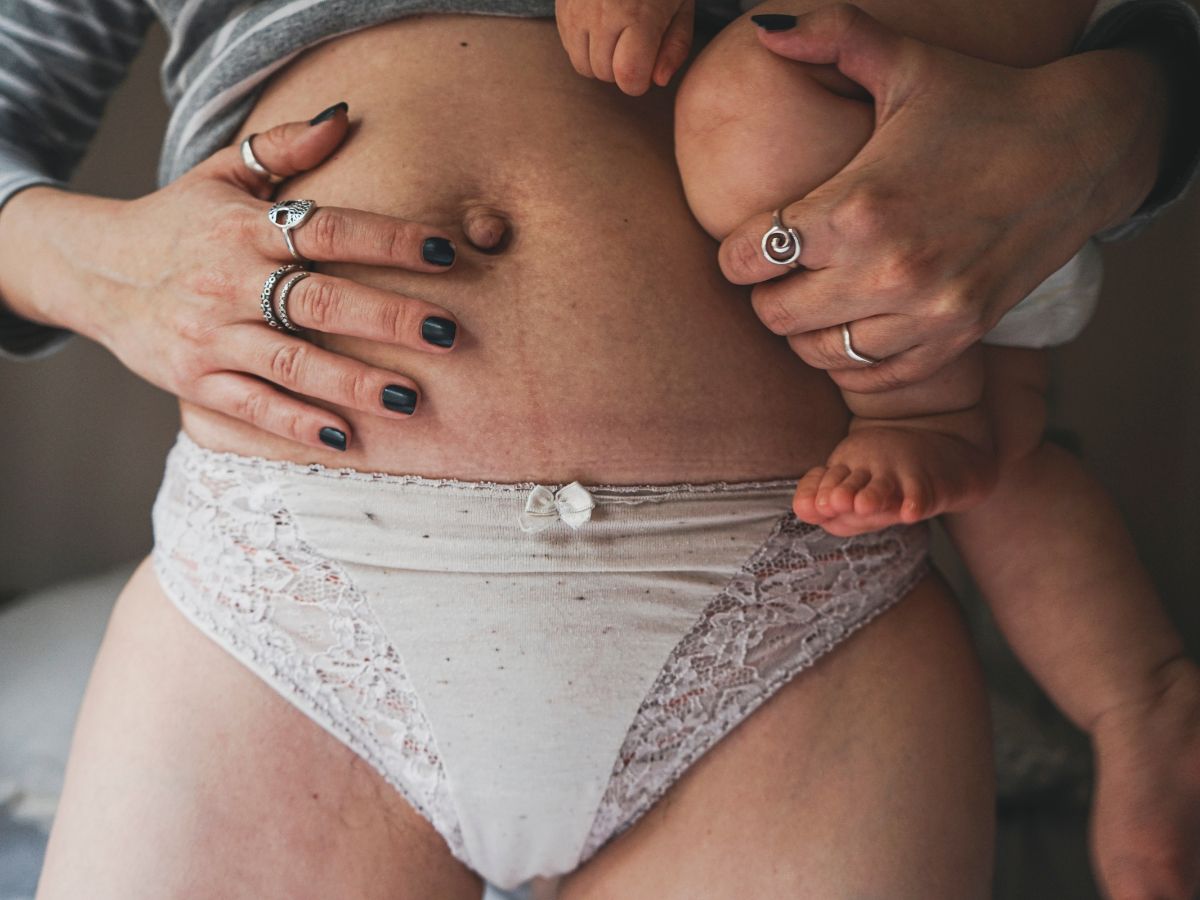Congratulations on the birth of your baby! As you navigate the weeks postpartum, it’s essential to stay informed about your body's recovery process. One common concern that many new mothers face is bright red bleeding 6 weeks postpartum. While this can be alarming, understanding what’s normal and when to seek medical attention can help ease your worries. Whether you had a vaginal birth or a cesarean section, your body is still healing, and we’re here to provide you with the information and support you need during this time.
Understanding Postpartum Bleeding
Postpartum bleeding, also known as lochia, is a normal part of the recovery process after childbirth. For the first few weeks postpartum, you may notice a range of vaginal discharge colors and consistencies. Let's break down the stages of lochia:
- Lochia Rubra: This is the initial stage of postpartum bleeding, lasting about 4-6 weeks. The discharge is bright red and similar to a heavy period.
- Lochia Serosa: Following the initial heavy bleeding, you’ll notice a lighter flow with pinkish or brownish discharge.
- Lochia Alba: This final stage involves a yellowish or whitish discharge as your body continues to heal.
Bright Red Bleeding at 6 Weeks Postpartum: Is It Normal?
Seeing bright red blood 6 weeks postpartum can be concerning, but it's not uncommon. Here are a few factors to consider:
- Normal Postpartum Recovery: It’s possible for bright red bleeding to occur occasionally due to your uterus still contracting and shedding its lining.
- Warning Signs: If you notice large clots (golf ball-sized or larger), excessive bleeding, or feel lightheaded, it’s essential to contact your healthcare provider immediately. These can be signs of postpartum hemorrhage or other medical conditions that require prompt attention.

Differences in Postpartum Bleeding: Cesarean vs. Vaginal Birth
Every birth is unique, and so is the postpartum recovery process. Whether you had a cesarean delivery or a vaginal birth, understanding the differences in postpartum bleeding can help you feel more prepared and informed.
Vaginal Birth
For mothers who delivered vaginally, postpartum bleeding, or lochia, tends to follow a typical pattern:
- Immediate Postpartum: Right after the birth of your baby, vaginal bleeding is often heavy and bright red. This is due to the shedding of the lining of the uterus and the blood vessels that supported the pregnancy.
- First Few Weeks: During the first week, the bleeding gradually decreases in intensity and changes color from bright red to pink or brown (lochia serosa) and eventually to a yellowish or whitish discharge (lochia alba). The uterus contracts to expel the remaining blood and tissue, which can cause some cramping.
- Healing Process: The uterine contractions help your body return to its normal size. This process involves the shedding of small clots and blood products.
Cesarean Delivery
Postpartum bleeding after a cesarean birth can differ slightly due to the nature of the surgical procedure:
- Initial Days: Although the initial bleeding might be less intense compared to a vaginal delivery, you will still experience bright red bleeding. This bleeding is a mix of menstrual blood and other fluids as your body sheds the lining of the uterus.
- Duration: The duration of lochia might be shorter for some women who had a cesarean birth, but this varies. Each woman's recovery process is unique.
- Surgical Factors: During a cesarean, the placenta is surgically removed, which might reduce the risk of retained tissue, a common cause of postpartum hemorrhage. However, you might still notice large blood clots and bloody discharge.
- Monitoring: Since a cesarean is a major surgery, it’s crucial to monitor for signs of infection or complications. Pay attention to the incision site and any unusual symptoms like a lot of blood loss or high blood pressure.

Common Causes of Postpartum Bleeding
Understanding the common causes of bleeding can help you identify when to seek medical attention:
- Uterine Atony: When the uterus doesn’t contract effectively, it can lead to heavy bleeding. This is a common cause of postpartum hemorrhage.
- Retained Placenta: Small pieces of the placenta that stay in the uterus can cause continued bleeding.
- Infection: An infection in the uterus or other reproductive organs can also lead to bleeding and requires immediate medical care.
Managing Postpartum Bleeding
To manage postpartum bleeding effectively and ensure a smooth recovery, here are some tips:
- Use Sanitary Pads: Avoid tampons as they can increase the risk of infection. Choose sanitary pads designed for postpartum use.
- Stay Hydrated: Drink lots of water to help your body heal. Our EasyJug water bottles make staying hydrated simple and efficient, especially when you’re busy caring for your newborn.
- Monitor Your Symptoms: Keep an eye on your bleeding and other symptoms. If you notice any warning signs, such as a severe drop in blood pressure or large clots, contact your healthcare provider.
- Rest and Recover: Give your body the time it needs to heal. Avoid heavy lifting, sexual intercourse and strenuous activities during the early weeks postpartum.
- Pelvic Floor Exercises: Gentle pelvic floor exercises can support your recovery and help manage bleeding.

When to Seek Medical Attention
If you experience any of the following, it's important to reach out to your healthcare provider:
- Heavy Bleeding: Soaking through a sanitary pad every hour.
- Large Clots: Passing clots larger than a golf ball.
- Fever or Chills: Indications of infection.
- Severe Pain: Especially in the lower abdomen or pelvis.
Why EasyJug is the Best Water Bottle for Postpartum Hydration
As you navigate the journey of postpartum recovery, staying hydrated is crucial. Hydration supports your overall health, aids in breastfeeding, and helps your body heal. That’s why we designed EasyJug with your needs in mind. Here’s why EasyJug is the best water bottle for postpartum hydration:
1. Ergonomic Design for Comfort
Postpartum recovery often involves dealing with physical changes and discomfort, such as pelvic pain or uterine contractions. EasyJug’s ergonomic design makes it easy to hold and use, even when you’re experiencing discomfort. The large handle and lightweight structure ensure you can hydrate effortlessly throughout the day.
2. Large Capacity to Keep You Hydrated
Staying hydrated is essential, especially when you’re producing breast milk. EasyJug’s large capacity means you won’t need to refill constantly, making it easier to drink plenty of water and meet your hydration needs. This is particularly helpful during those early weeks when you’re busy caring for your newborn.
3. Convenient Extra Long Straw for Easy Sipping
Whether you’re breastfeeding or resting, the last thing you want is to struggle with a water bottle. EasyJug features a convenient, easy-to-use straw that allows you to sip water without having to lift or tilt the bottle. This is perfect for those moments when you’re cuddling with your baby or lying in bed.
4. Designed for Postpartum Comfort
Staying hydrated supports your overall health and recovery. EasyJug’s design considers the needs of new mothers, making it simple and efficient to use, even when you’re managing other aspects of your recovery.
5. BPA-Free and Safe
Your health and safety are our top priorities. EasyJug is made from BPA-free materials, ensuring that every sip is safe for you and your baby. You can trust that you’re drinking from a bottle that prioritizes your well-being.
6. Encourages Regular Hydration
EasyJug’s appealing design and functionality encourage you to drink more water throughout the day. Keeping hydrated can help with everything from improving your energy levels to supporting the production of breast milk. Plus, staying well-hydrated can help reduce the risk of common postpartum conditions like urinary tract infections.
Conclusion
Navigating the postpartum period can be both rewarding and challenging, especially when dealing with concerns like bright red bleeding 6 weeks postpartum. Understanding what's normal and when to seek medical attention is crucial for your peace of mind and health. Whether you had a vaginal delivery or a cesarean birth, your body needs time to heal, and staying hydrated is a key part of that recovery process. EasyJug is here to support you every step of the way with our thoughtfully designed water bottles, making it easier for you to stay hydrated and focus on what truly matters—caring for yourself and your precious new baby. Remember, you are not alone on this journey. Lean on your community, stay informed, and take care of your health. Congratulations again on the birth of your baby, and welcome to the EasyJug family!





